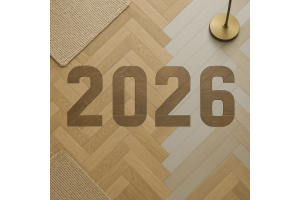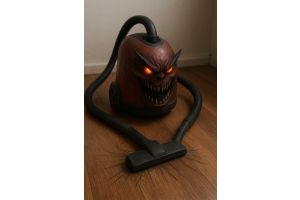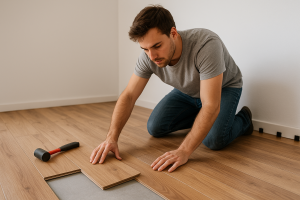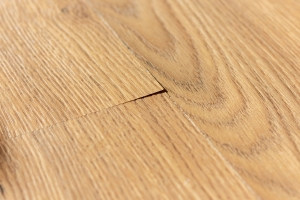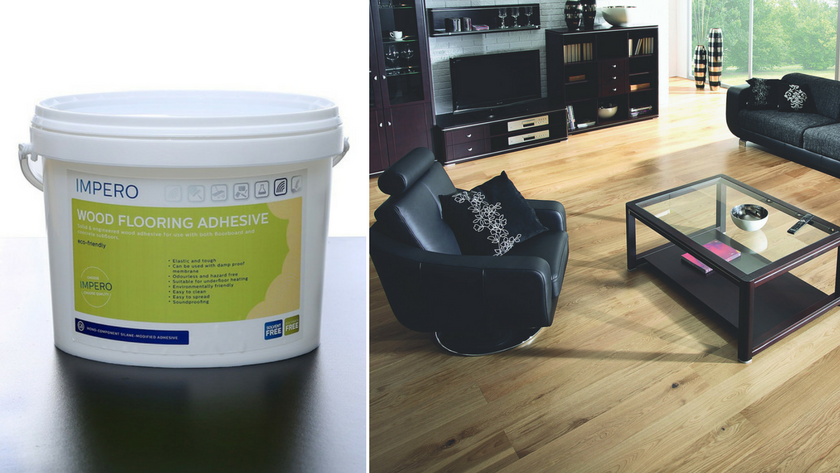
In our previous post, we introduced our three-part series of blogs covering the different installation method available for your flooring. In part one, we gave you the full low-down on floating floors as a flooring fixing method. We covered how it works, as well as its pros and cons. Next up, we look at glue-down installations as a fixing method for new floors.
Glue-down Floors
Flooring Types
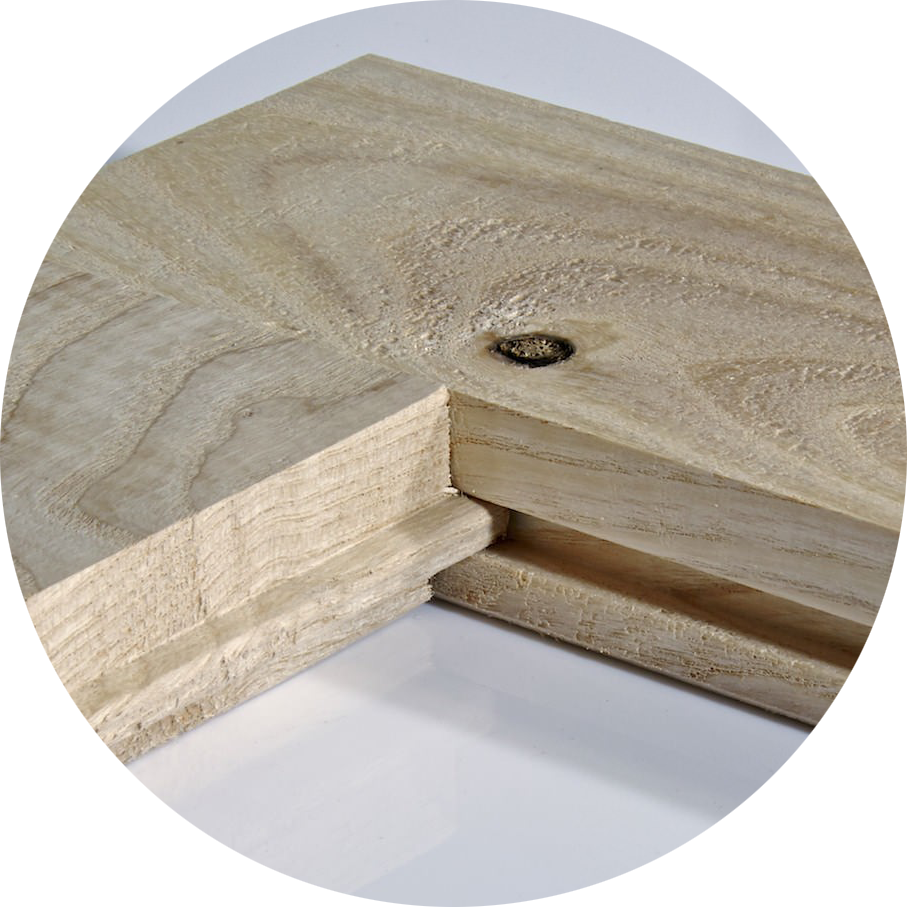 |
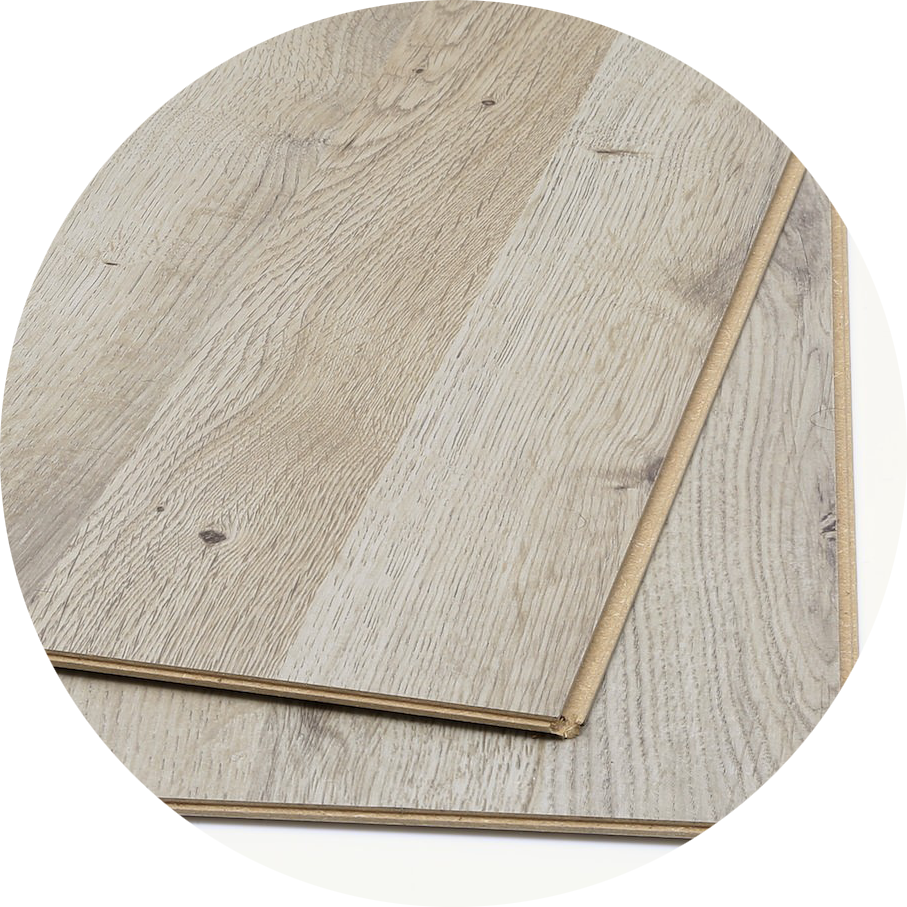 |
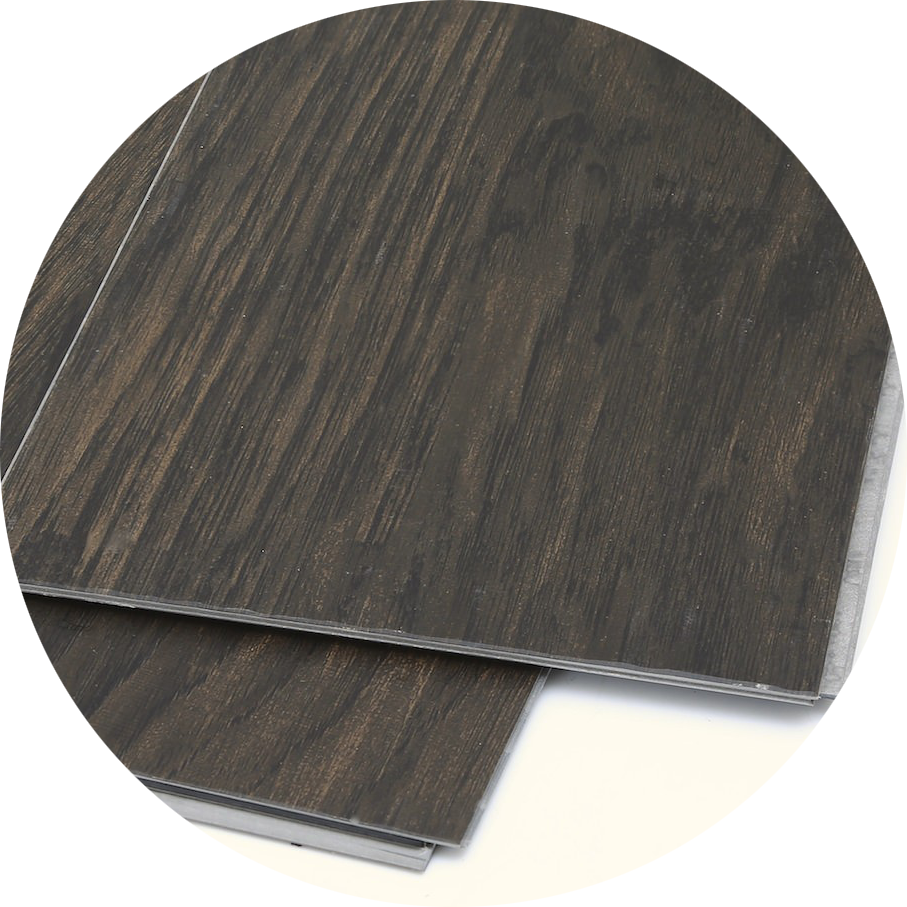 |
| Parquet Flooring | Laminate Flooring | Gluedown Luxury Vinyl Tiles |
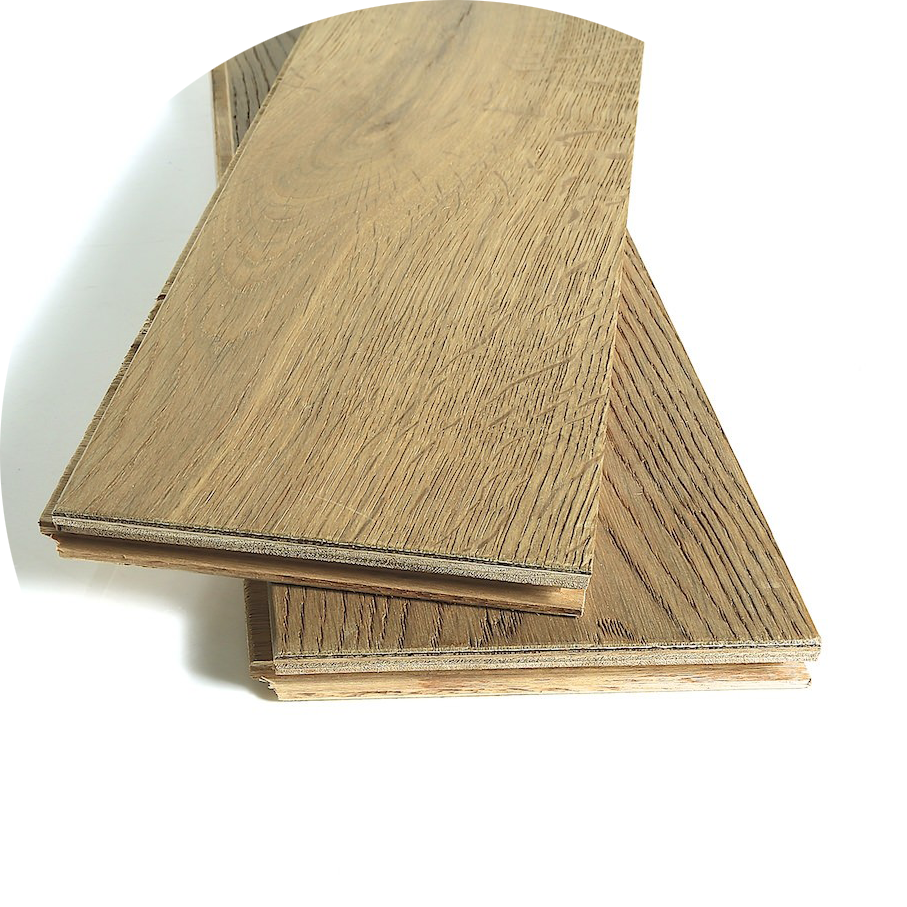 |
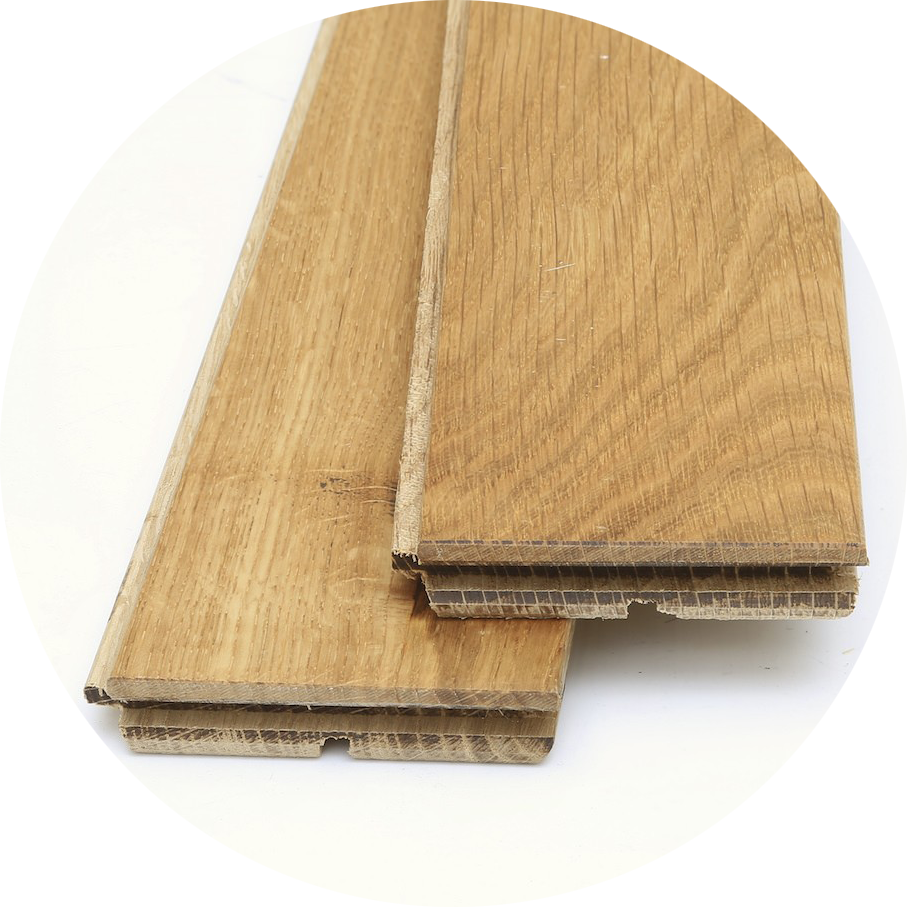 |
||
| Engineered Wood Flooring | Solid Wood Flooring | ||
How it works
There are numerous reasons why people opt for glue-down installations as their preferred fixing method. Whilst we’ll get to the pros and cons in a minute, let’s look at what glue-down floors entail.
As with all fixing methods, you’ll need to ensure your subfloor is completely level. Gluing is often used when laying over concrete or wood. A strong adhesive specifically made for wood flooring is required to ensure longevity and premium quality. The adhesive is then applied to the subfloor in small, workable sections. This is done to ensure the glue doesn’t dry prematurely. As with laying any wood floor, you need to ensure an appropriate expansion gap is left.
Glue-down floors, technically, are usable on all wood flooring types. However, it is mostly used on solid wood boards which do not have a click or tongue and groove system. Whilst it can be used on flooring with these systems, it’s often seen as less cost-effective due to the extra materials and time needed for installation.
If you are laying over concrete, it’s crucial to ensure there is no dampness within the subfloor. Even the smallest amount can lead to issues in the future. If you can’t be certain there’s no damp, you can use a liquid damp proof membrane (DPM) before you glue your flooring down. This adds a protective layer to prevent the moisture getting into the wood.
Don't Glue Tongue and Grooves
Glue-down installations are not to be confused with gluing the tongue and groove systems often found on wood flooring. Whilst you are able to glue tongue and grooves together, this isn’t recommended if you’re also gluing your wood to the subfloor. This is because wood flooring needs room to move as it expands. If the wood is glued both to the subfloor and between the planks, there’s no room for movement.
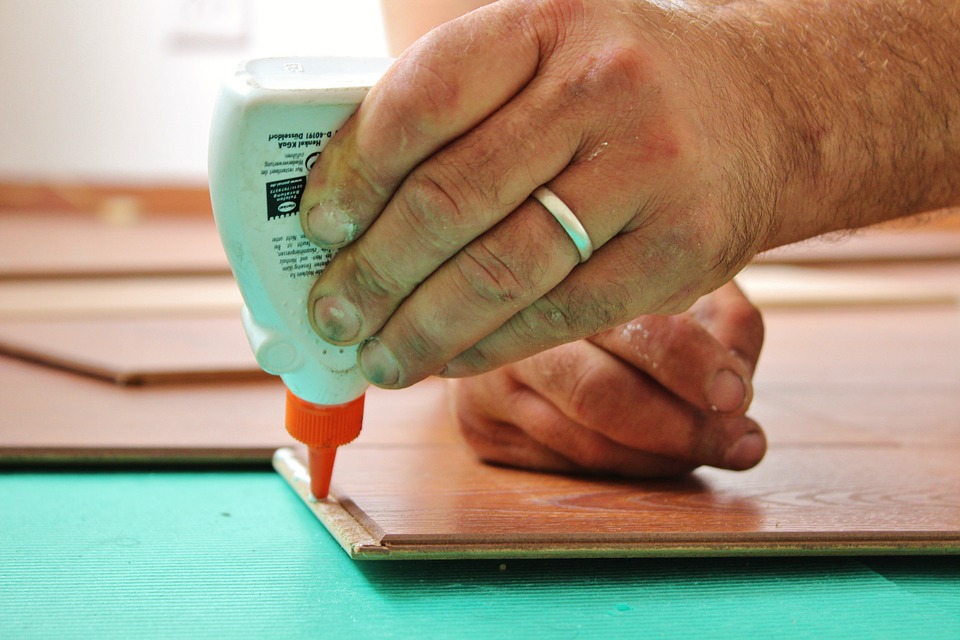
In the long-run, limited movement leads to cracks, disfigurement and warping of your wood flooring. So, if you’re gluing on the tongue and grooves, you’re better using a floating floor installation. If you’re gluing to your subfloor, do not glue your planks together to allow for necessary movement.
Pros
- Wood flooring that’s glued is much more robust and feels sturdier underfoot. Because it’s attached to the subfloor, the end result is incredibly stable.
- Glue-down floors are seen as a more permanent fixing method, and is preferred when you expect the flooring to stay there for decades.
- Wood that has been glued down allows for the necessary expansion and contraction, without risking too much growing or shrinking which could lead to cracks and more serious damages.
- Glued wood eliminates the hollow sound that is occasionally presents in floating installations, which makes it feel higher quality and more robust.
Cons
- The time it takes to install your flooring is likely to be higher, as more work is required when gluing to the subfloor. You also can’t use your flooring straight away, as you need to allow time for the adhesive to dry.
- This increased time is likely to result in higher costs if you're using a professional fitter. The added necessity of purchasing glue is also an extra cost to consider, although buying in large quantities can help to keep your outgoings at bay.
- If damage occurs to a section of your flooring, the floor being glued down makes it significantly more difficult to replace than if you had a floating floor.
- Glue can damage your brand new wood flooring’s look if it gets onto the face of the plank. To prevent this issue, make sure any bits that make their way onto the top of the wood are cleaned as soon as possible. Don’t let it dry!
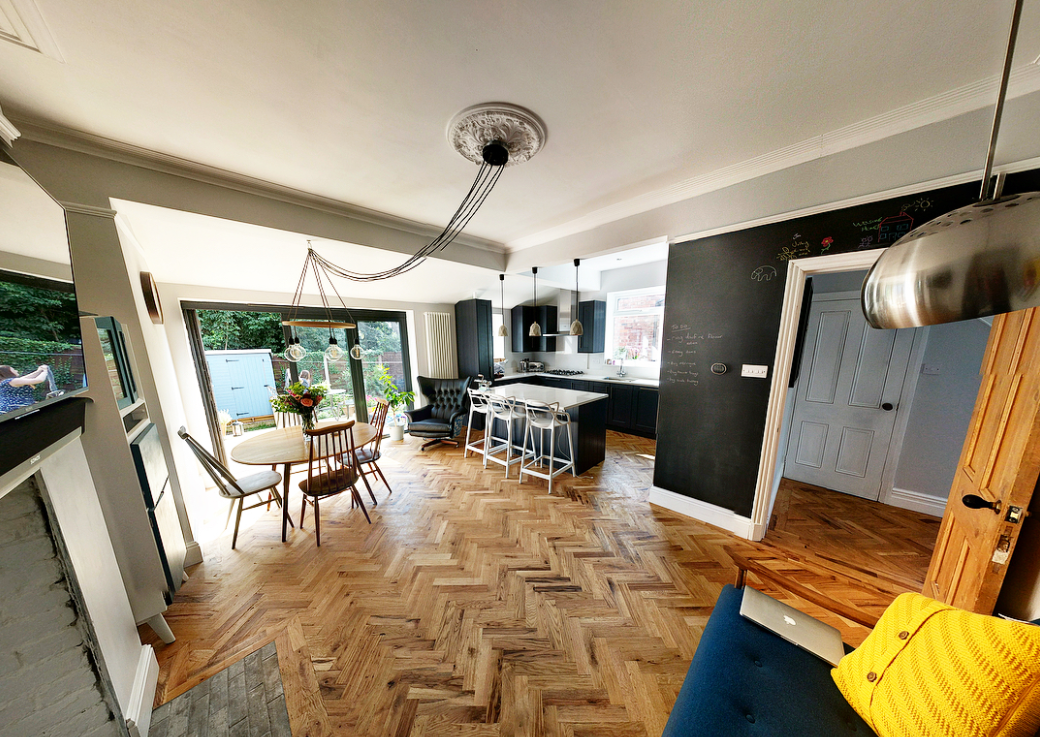
Gluedown installations are a popular fixing method, and there’s no denying the quality feel it brings to a brand new wood floor. If you’re looking for more in-depth information on the steps to installing gluedown floors, our handy guide to gluing engineered wood flooring is a great source of information.
Next up, we’ll be looking at the third and final installation method; secret nailing. If there’s anything you’d like more information on, our helpful team are on hand with all of the information you need. Get in touch today by calling 03308 088777 or email [email protected].








